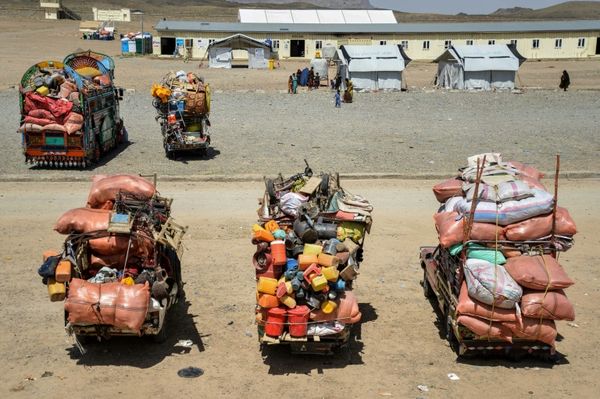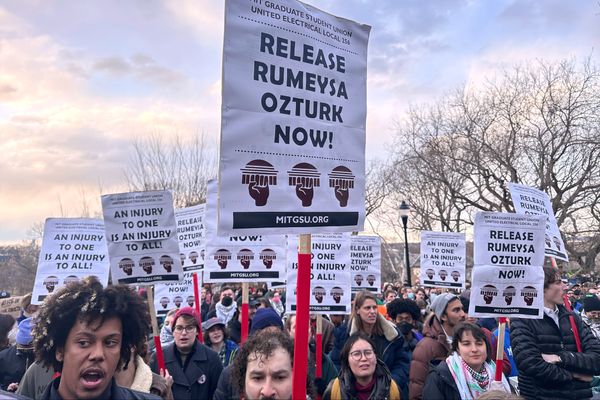
European leaders have been asked by the US to provide security guarantees, including a military force, for Ukraine in the event that Donald Trump is able to strike a peace or ceasefire agreement with his Russian counterpart, Vladimir Putin.
Though an end to the near three-year war in Ukraine had been considered some way off, Trump’s announcement last Wednesday that he was willing to talk to Russia – has led to a scramble across Europe to work out how to respond.
What could a military force in Ukraine look like?
Matthew Savill, director of military sciences, at the Royal United Services Institute thinktank, argues there are several levels of force that could be deployed after a ceasefire in Ukraine. The first is a large land deterrence force, able in theory to fight, if Russia were to invade again – probably on the lines of the 100,000 to 150,000 troops sought by Ukraine’s president, Volodymyr Zelenskyy.
But with the US ruling out participating, personnel constraints mean it is far from clear Europe could supply such a number, and Savill believes a more credible alternative would be a “tripwire” force of some “tens of thousands with European brigades on parts of the frontline”. That would be a more limited assistance, but could mean that if Russia were to attack Ukraine again, European countries would be drawn into the conflict.
A more limited model still would be “a large training force”, which could amount to a deterrent because the European troops would be based in Ukraine, and who may be able to fight and provide support in a military crisis. But this would be only a limited aid to Ukraine – which is facing about 600,000 Russian troops along an active front of at least 600 miles.
Ben Barry, a military expert at the International Institute for Strategic Studies, adds that “an air and maritime component” are also necessary to any future support for Ukraine.
Would they be peacekeepers?
It is unlikely that any European force deployed to Ukraine would be a peacekeeping mission. Such missions are orchestrated by the UN and would involve working in a even-handed way, patrolling both sides of a line of contact. They have been exposed as toothless in the past, most notably in Bosnia in July 1995 when Serbian forces massacred about 8,000 Bosnian Muslims in Srebrenica who were nominally under UN protection.
Whatever size the force is, it would more likely be under some kind of European command. Last Wednesday, the US defence secretary, Pete Hegseth, said such troops would not be covered by a Nato security guarantee, meaning countries involved would have to fend for themselves if a new conflict with Russia broke out.
What are European countries saying? Are they willing to participate if needed?
France has been the most enthusiastic about deploying a military contingent to Ukraine, and the country’s president, Emmanuel Macron, is hosting a summit of European leaders in Paris on Monday afternoon. Overnight, Keir Starmer, the UK prime minister, said the UK would also be willing to deploy “our own troops on the ground if necessary” and Sweden also indicated its participation was a possibility.
But in Germany, the chancellor, Olaf Scholz, who faces an election this weekend, said such discussions were premature given the wider uncertainty about where the US-Russia talks will end up. Meanwhile, Poland, which has been heavily re-arming, has ruled out sending troops to its neighbour – a blow to the nascent multinational effort.
What does Russia think?
Russia launched the full-scale invasion of Ukraine in February 2022 at least in part to prevent its smaller neighbour from becoming part of the west, including joining Nato. Its overall objectives have not changed, including its aspiration to demilitarise Ukraine, and it would be likely to oppose the presence of European troops inside the country.
The Kremlin wants to exclude European countries from its talks with the US. “I don’t know what they would be doing at the negotiating table,” the foreign minister, Sergei Lavrov, said on Monday – and the Americans seem happy to agree. If a European force was to be deployed to Ukraine it might well be subject to low-level provocative attacks, designed to test their willingness to remain deployed in the country.
Would there be a risk of a wider conflict between Europe and Russia?
While US politicians have ruled out sending ground troops, the US has not (yet) ruled out providing air support. A no-fly zone over Ukraine would be a significant help to Kyiv, but the White House appears so uninterested in Ukraine it is not clear that it would even entertain this step.
The more likely scenario is that European countries would have to provide a full security guarantee to Ukraine – raising the question of how far Europe is prepared to go. Britain and France possess nuclear weapons, but given Russia’s larger nuclear arsenal, it would be unlikely they would pledge them in defence of Ukraine.
Russia has suffered heavy casualties in Ukraine and struggled to gain territory after 2022 and may not want to be drawn into another overt conflict. But with the US committing itself to non-involvement, the Kremlin may consider western forces in Ukraine a softer target than those covered by the Nato umbrella in the rest of Europe.







